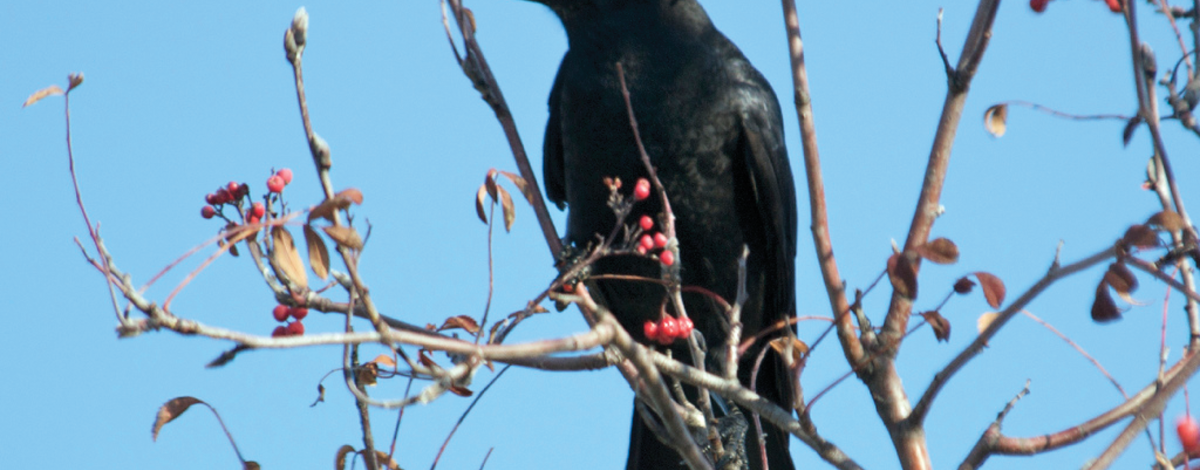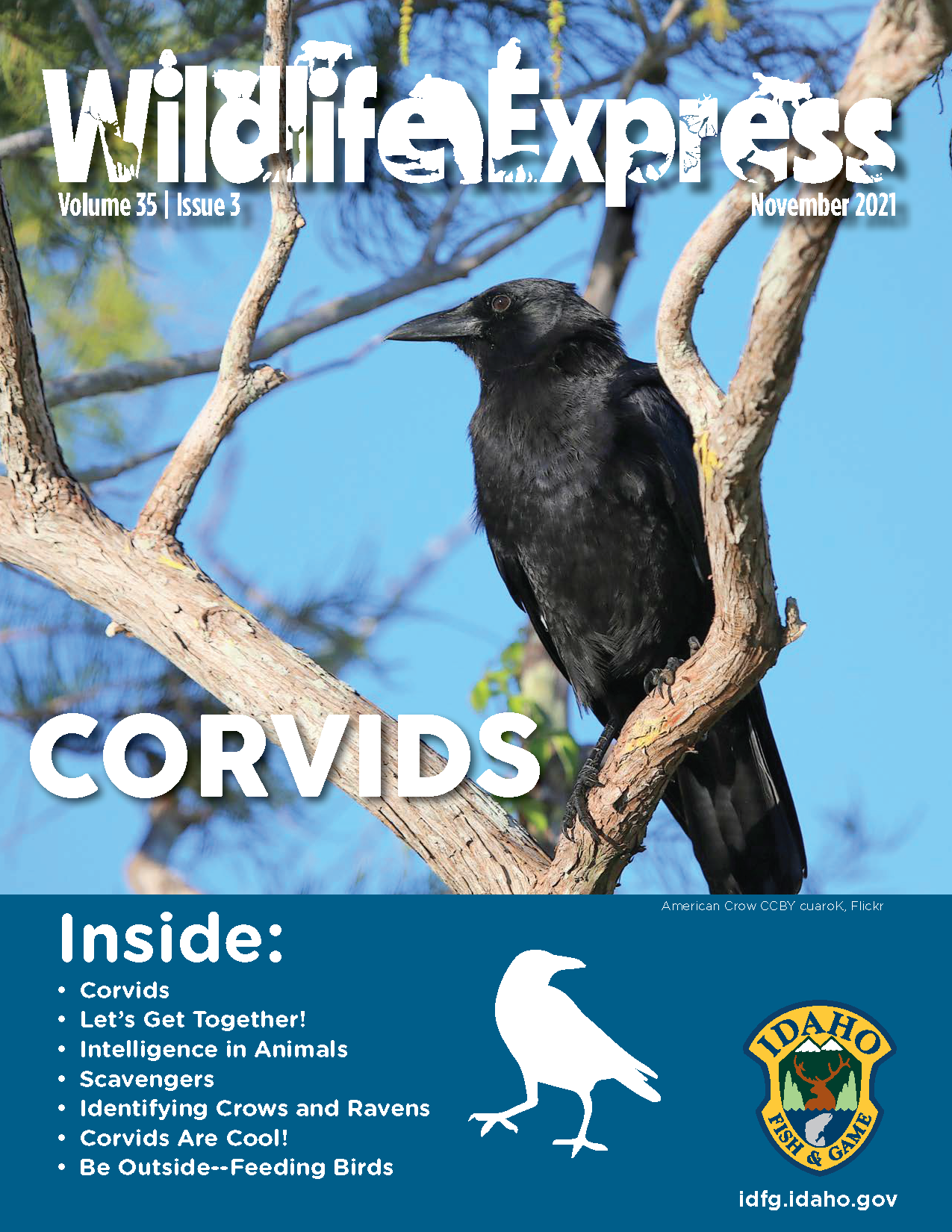If you spend time outside, you have probably met a bird that is part of the corvid family. This group includes ravens, crows, jays, magpies, and nutcrackers. Corvids are found all over the world with twenty species living in North America. Nine different kinds of corvid can be seen here in Idaho.
These include the common raven, American crow, black-billed magpie, Clark’s nutcracker and five species of jays. The jays you might see are Steller’s jay, Woodhouse’s scrub-jay, pinyon jay, Canada jay, and even an occasional eastern blue jay. Most corvids are very social. If you see one, several others are sure to be close-by.
Corvids are large birds. Ravens are the largest, weighing almost three pounds, twice as much as a crow. Jays are the smallest, but are still the size of a ruler. Jays are also the most colorful, often blue with some white and gray. All corvids have strong feet and beaks. Their beaks help to open tough foods, like nuts or clams. The lower jaw has a special structure that acts to brace the jaw against the bird’s skull. This lets the bird use its jaw like a chisel to open hard items.
Corvids often store or cache (CASH) their food. Idaho’s Clark’s nutcracker caches and finds food it stored in thousands of locations. Nutcrackers sometimes forget some of their caches. The uneaten seeds feed other animals or grow into trees.
This group of birds is known for being very smart. Ravens and magpies are able to recognize up to seven groups of different objects. This is like your understanding of the difference between seven groups of different candies. Ravens have problem-solving abilities. Scientists studied ravens that were given a perch with a piece of string hanging from it. A piece of food was tied to the other end of the string. Without ever seeing it before and with no practice, the ravens were able to figure out how to solve the problem. They used their beak and feet to reel in the string and get the food.
Crows have learned to open hard objects like nuts and clams by dropping them on hard surfaces like roads. Some crows also set nuts on roads and wait for cars to crack the nuts open. Crow parents will break off pinecones and throw them down at an intruder climbing toward their nest. They can even identify individual people based on their experience with that person. Some jays and ravens have learned that the sound of a gunshot might mean a meal. Hunters field dressing their harvested animal are surprised to find they have an audience of birds waiting for dinner. This information just might change your mind about calling someone a bird-brain!
Learn more about these social birds in the November edition of Wildlife Express.
- Corvids– [PDF, 3.4 MB]
- Corvid Activities– [PDF, 893 KB]
Wildlife Express is an Idaho Fish and Game monthly publication about wildlife species and subjects. To read past editions, visit https://idfg.idaho.gov/education/wildlife-express.


